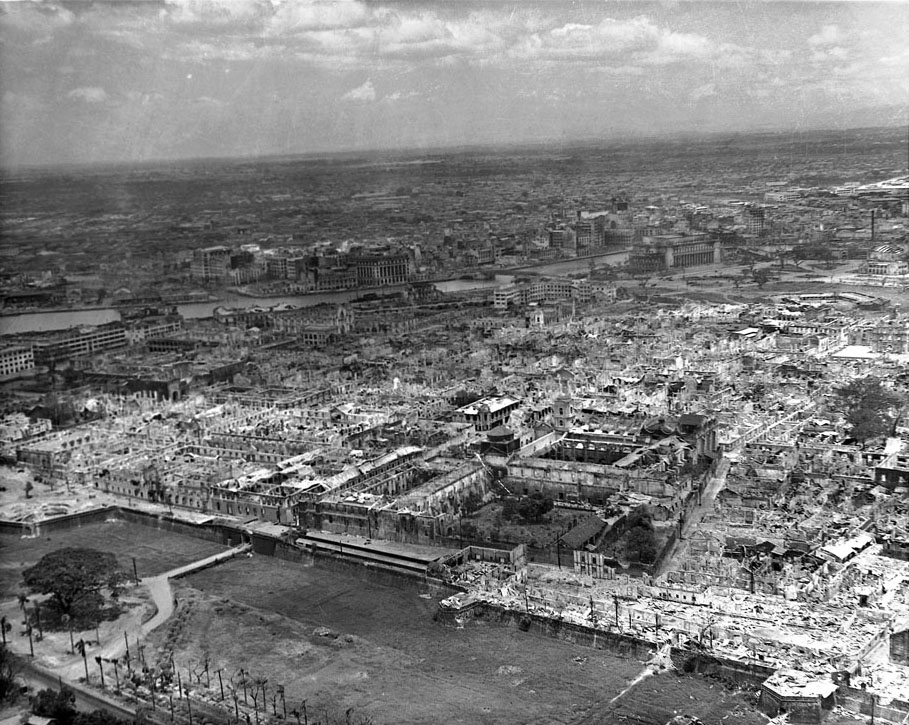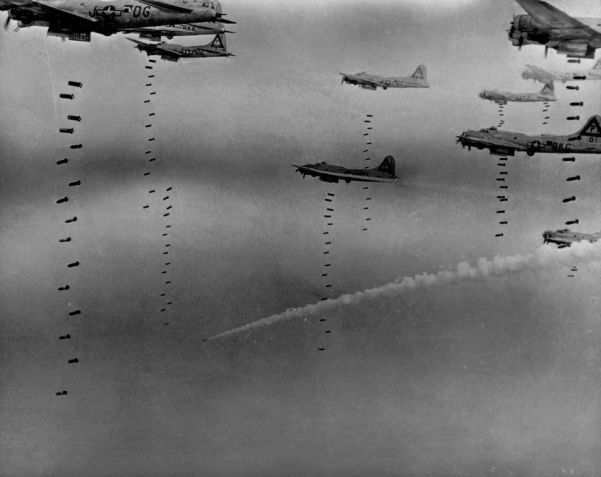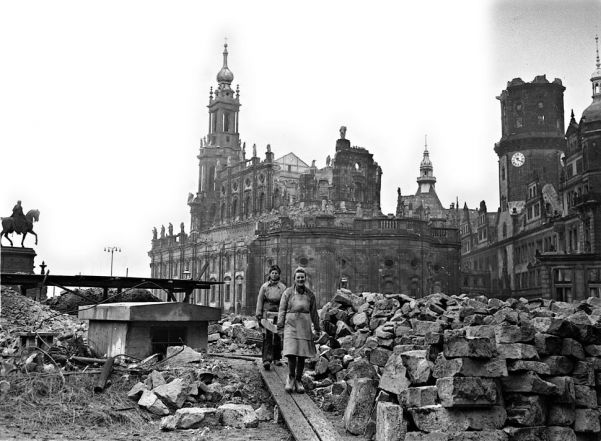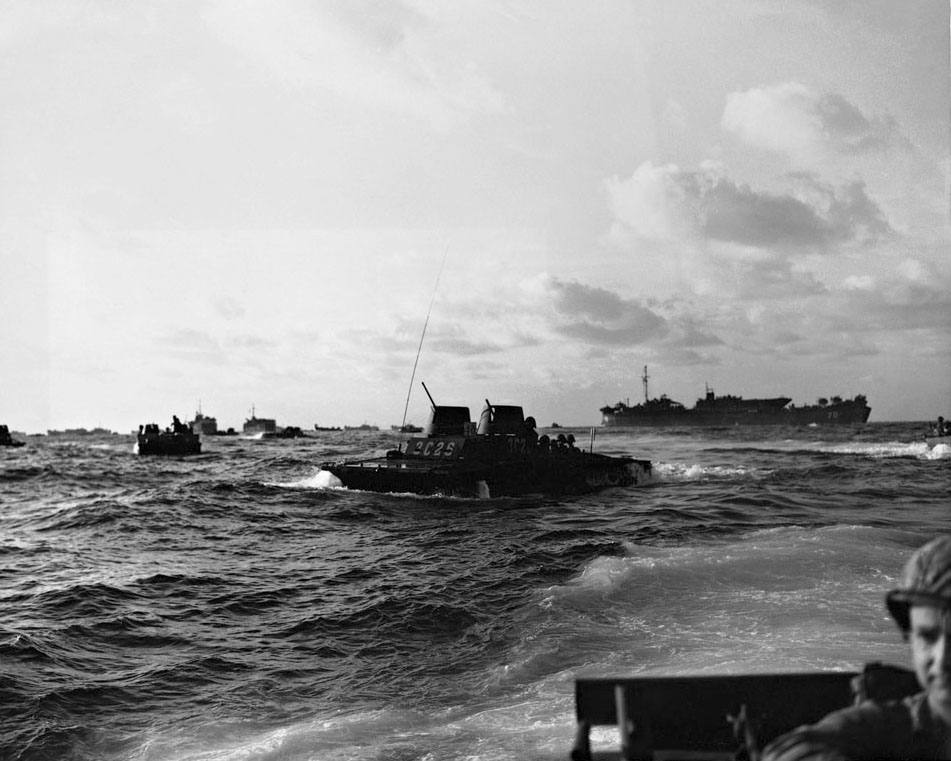1 February
Eastern Front, East Prussia
The trapped German Fourth Army attempts to reach German-held Elbing but is halted by a Soviet counterattack.
3 February-3 March
Pacific, Philippines

The US XIV Corps begins its attack against Manila, which is defended by 17,000 Japanese troops under Rear Admiral Sanji Iwabuchi. The garrison, after destroying the city (the ‘Rape of Manila’), is wiped out. US casualties total 1000 dead and 5500 wounded; 100,000 Filipino citizens are killed.
4-11 February
Politics, Allies
Marshal Joseph Stalin, President Franklin D. Roosevelt, and Prime Minister Winston Churchill meet at the Yalta Conference in the Crimea to discuss postwar Europe. The ‘Big Three’ decide that Germany will be divided into four zones, administered by Britain, France, the United States, and the Soviet Union. An Allied Control Commission will be set up in Berlin, and Austria will also be divided into four zones. The capital, Vienna, will be in the Soviet zone and will also have a four-power administration. The Soviet Union will declare war on Japan two months after the war in Europe has ended, while changes to Poland’s borders will allow the Soviet Union to annex former Polish areas.
5 February
Western Front, France
The German bridgehead on the west bank of the Rhine, south of Strasbourg around the town of Colmar - the Colmar Pocket - is split by units of the French First Army attacking from the south and elements of the US Seventh Army advancing from the north. The elimination of the pocket is essential to the crossing of the Rhine.
8-24 February
Eastern Front, Germany
Marshal Ivan Konev’s 1st Ukrainian Front begins its offensive to disrupt German plans and establish an impregnable defense line along the southern Oder. By the 24th his forces have advanced 75 miles (120 km) and seized Lower Silesia, in addition to freeing 91,300 Soviet citizens and 22,500 other foreigners from German imprisonment.
9 February
Western Front, France
Following Allied pressure against the Colmar Pocket, Field Marshal Gerd von Rundstedt, German commander-in-chief in the West, convinces Hitler to pull back the Nineteenth Army across the Rhine. The west bank of the river south of Strasbourg is now free of German troops.
10 February
Eastern Front, Poland

The Soviet 2nd Belorussian Front launches an offensive in the region of Grudziadz and Sepolno but runs into determined resistance from the German Second Army. Soviet progress is very slow.
11 February
Eastern Front, Hungary
The trapped Axis garrison in Budapest attempts to break through the Soviet lines. However, of the nearly 30,000 Germans and Hungarians, fewer than 700 are able to escape.
13-14 February
Air War, Germany


The RAF mounts a night raid on Dresden. The 805 bombers inflict massive damage on the city’s old town and inner suburbs. The bombing triggers the worst firestorm of the war, in which at least 50,000 people are killed. The raid is controversial, as the city has negligible strategic value, is virtually undefended, and is crammed with refugees. The next morning, the city is bombed again by 400 aircraft of the US 8th Army Air Force.
14 February
Eastern Front, East Prussia
As a result of the Red Army’s advance, over half of the 2.3 million population of East Prussia have fled west. Some have been taken out by boat, although most have walked or made their way by horse and wagon. Thousands have died from either cold or exhaustion, or in Soviet air and artillery attacks.
16-28 February
Pacific, Philippines
US forces begin to clear the Japanese from the entrance to Manila Bay, Luzon. The peninsula of Bataan falls relatively easily, though Corregidor proves a harder nut to crack. The assault begins on the 16th with a battalion of US paratroopers dropping on the southwest heights of the island. Simultaneously, an amphibious assault by a battalion of infantry takes place on the southern shore. By the evening of the 26th, almost the whole island is in US hands. It is declared secure on the 28th. The Japanese garrison refuses to surrender, and is virtually wiped out in the fighting.
16 February
Pacific, Iwo Jima

The US Navy begins a three-day concentrated bombardment of Iwo Jima. The island has to be taken for four reasons: the unescorted US bombers flying from the Marianas to Japan are suffering heavy losses, and, therefore, airfields closer to Japan are needed for fighter escorts; Iwo Jima has two air bases and is only three hours’ flying time from Tokyo; Iwo Jima is prewar Japanese territory, whose loss would be a severe blow to the homeland; and it is a key link in the air defenses of the Marianas.
17 February
Pacific, Iwo Jima
Under the command of Lieutenant General Holland M. Smith, the US 4th and 5th Marine Divisions land.
Resistance is at first light, but then the attackers are hit by intense artillery and small-arms fire from the 21,000-man Japanese garrison. However, despite casualties, the Americans have 30,000 men on the island by the end of the day.
21 February
Western Front, Germany
The Canadian First Army takes Goch, which ends Operation Veritable, an offensive from the Nijmegen area between the Rhine and the Maas Rivers.
Far East, Burma
General William Slim’s British Fourteenth Army begins the reconquest of central Burma. Breaking out of the Irrawaddy bridgeheads, columns are directed to Mandalay, Burma’s second city, and the important rail and road communications center at Meiktila.
In northern Burma, the British 36th Division breaks through Japanese positions at Myitson after a vicious three-week battle. Japanese forces are now on the retreat in the area.
23 February
Western Front, Germany
The US First and Ninth Armies launch Operation Grenade, the crossing of the Roer River, and head to the Rhine. Preceded by a barrage from over 1000 guns, four infantry divisions cross the river in the face of sporadic resistance. German reserves have been committed to halt Operation Veritable farther north. By the end of the day, 28 infantry battalions have crossed the river.
Pacific, Iwo Jima
US Marines raise the American flag on the summit of Mount Suribachi in the south of the island. The US Marines now have to turn north to clear the rest of the island.
25 February
Pacific, Iwo Jima
As the fighting on Iwo Jima becomes more intense, the US 3rd Marine Division is committed to the battle.
28 February
Politics, Saudi Arabia
Following the example of Syria on the 26th, Saudi Arabia declares war on Germany. The rush to join the Allies in part stems from the announcement that only those states that declare war before March 1 will be invited to a conference in San Francisco on the proposed postwar United Nations.
Western Front, Germany
The US First Army begins its drive to the Rhine River, spearheaded by the VII Corps.
Pacific, Philippines
A regiment of the US 41st Division captures the island of Palawan.
